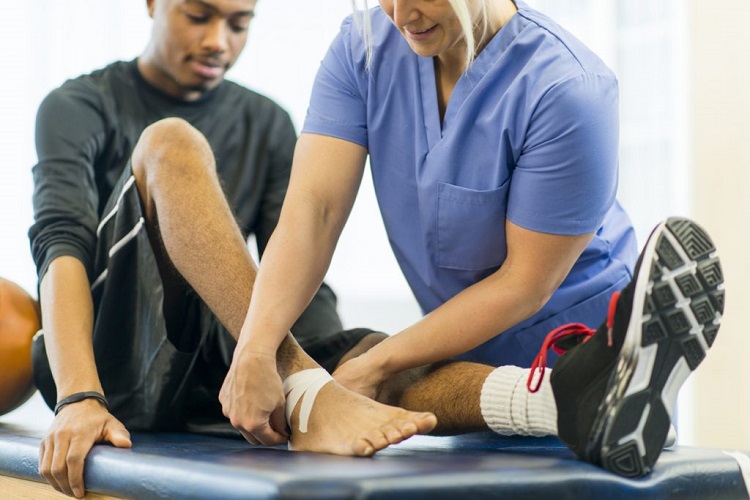The Science Behind Sports Physical Therapy: Healing Your Body with Precision

Physical therapy for sports is an important part of recovery and rehabilitation for players of all levels. Whether you’re recovering from a sports injury or aiming to enhance your performance, sports physical therapy provides the precise care needed to heal and improve your physical abilities. But what exactly goes on behind the scenes during sports physical therapy? Let’s explore the science behind this healing process and why a sports physical therapist is key to your recovery journey.
Table of Contents
Understanding Sports Physical Therapy
People who hurt themselves while playing sports or doing other physical tasks can get help from sports physical therapy. It helps with pain, getting movement back, and keeping accidents from getting worse in a number of ways. The goal is to help patients regain full function, which could mean going back to sports or just getting the mobility they need to do regular things.
Sports physical therapists are highly trained professionals who use evidence-based techniques to guide patients through rehabilitation. They design personalized treatment plans based on a patient’s specific injury, needs, and goals. Treatment modalities may include manual therapy, exercise regimens, modalities like heat and ice, and even advanced techniques like dry needling or electrical stimulation.
The Science of Healing
At the core of sports physical therapy is the understanding of human biomechanics—how the body moves and functions. This involves analyzing muscle groups, joints, tendons, ligaments, and the nervous system to address underlying issues rather than just symptoms. Studies discussed on Ncespro explore how targeted rehabilitation techniques can enhance recovery and prevent future injuries by correcting movement patterns and improving overall functionality.
When an athlete suffers an injury, whether it’s a sprain, strain, tendonitis, or ligament tear, the body goes through a natural healing process. However, this process can be slow and inefficient without proper rehabilitation. A sports physical therapist helps expedite healing by stimulating the body’s natural recovery systems, improving strength, flexibility, and stability in the injured area.
Key Techniques in Sports Physical Therapy
- Manual Therapy: One of the most common approaches used by sports physical therapists is manual therapy. This involves hands-on techniques, such as joint mobilizations and soft tissue manipulation, to improve mobility, decrease pain, and promote healing. The therapist may apply gentle pressure to stiff joints or tense muscles to release tightness and restore normal function.
- Strengthening and Flexibility Exercises: A crucial aspect of sports physical therapy is building strength and restoring flexibility. After an injury, muscles and ligaments may weaken, or scar tissue may form, limiting the range of motion. A sports physical therapist will guide you through specific exercises designed to target weak or imbalanced areas. These exercises help rebuild muscle strength, restore proper movement patterns, and prevent future injuries.
- Modalities: In addition to exercises, therapists may use modalities like ice, heat, ultrasound, or electrical stimulation to support healing. Ice is often used to reduce swelling and numb pain, while heat can promote blood flow to an injured area, helping tissue repair. Ultrasound therapy sends sound waves deep into tissues to help them heal at the cellular level. Electrical stimulation, on the other hand, can wake up muscles and ease pain.
- Neuromuscular Re-education: Many sports injuries affect not only the muscles but also the nervous system. The brain’s ability to communicate with injured muscles may be disrupted, leading to abnormal movement patterns. Neuromuscular re-education helps retrain the brain and muscles to work together properly, improving coordination and preventing re-injury.
Preventing Future Injuries
Injuries can be healed with sports physical therapy, but it’s also very important to keep injuries from happening. A sports physical therapist will assess your movement patterns, posture, and biomechanics to identify areas of weakness or imbalance. They will then design a program tailored to your specific needs that targets those weaknesses and correct faulty movement patterns.
For athletes, avoiding future injuries is just as important as recovering from current ones. Sports physical therapists often incorporate techniques like strengthening exercises, balance training, and proprioception drills to improve performance and reduce the risk of injury. These exercises enhance the body’s ability to respond to stress, improving agility and reaction times during sports activities.
Conclusion
The science behind sports physical therapy comes from having a deep knowledge of how the body works and how it is built. Sports physical therapists can speed up healing, restore function, and help athletes get stronger before they go back to their sport by using targeted exercises, advanced therapies, and hands-on methods. Working with a sports physical therapist can help you heal your body precisely so you can get back to doing what you love without pain and with more strength. This is true whether you’re recovering from an accident or trying to improve your athletic performance.
Leave a reply
You must be logged in to post a comment.


















